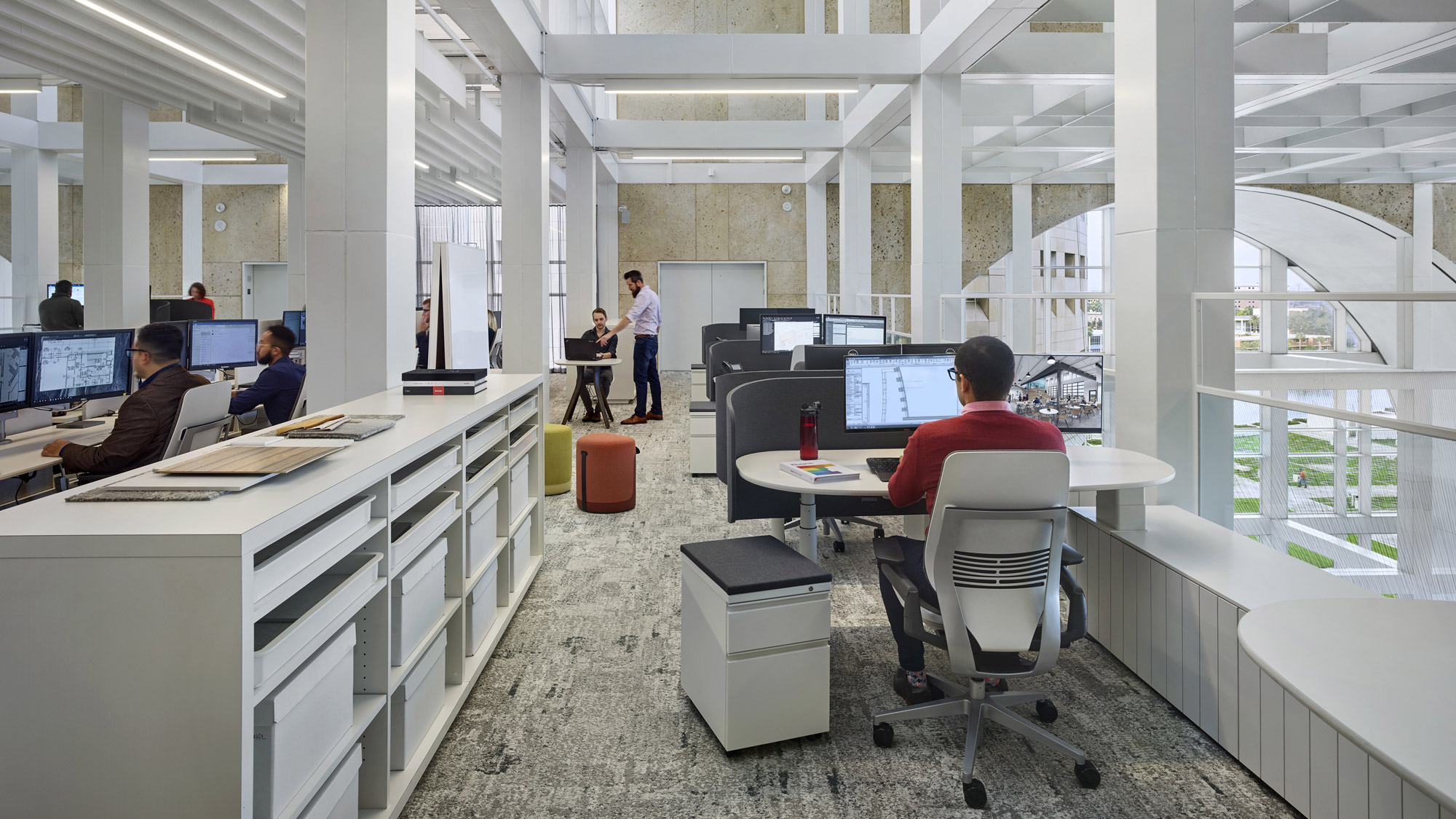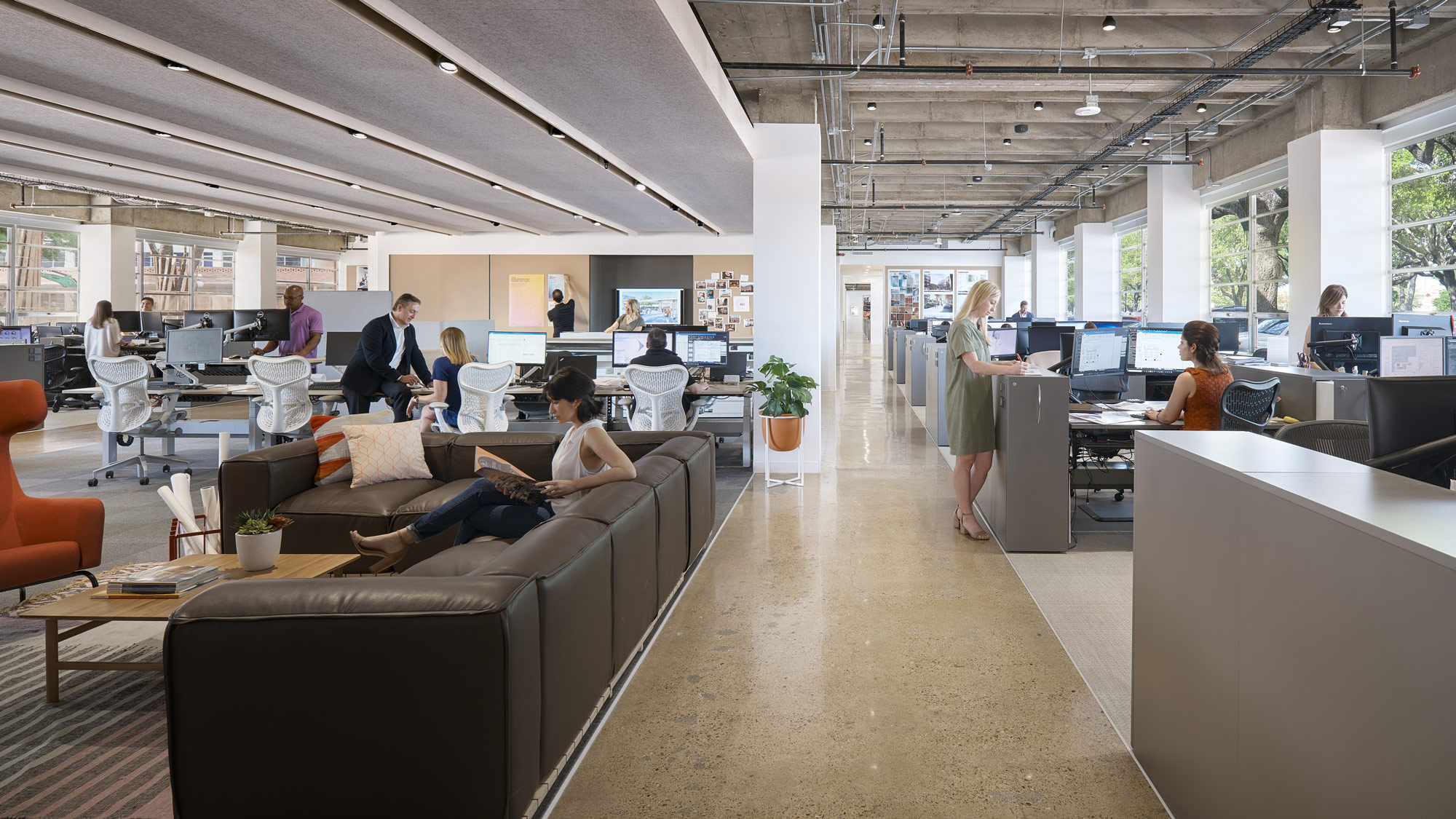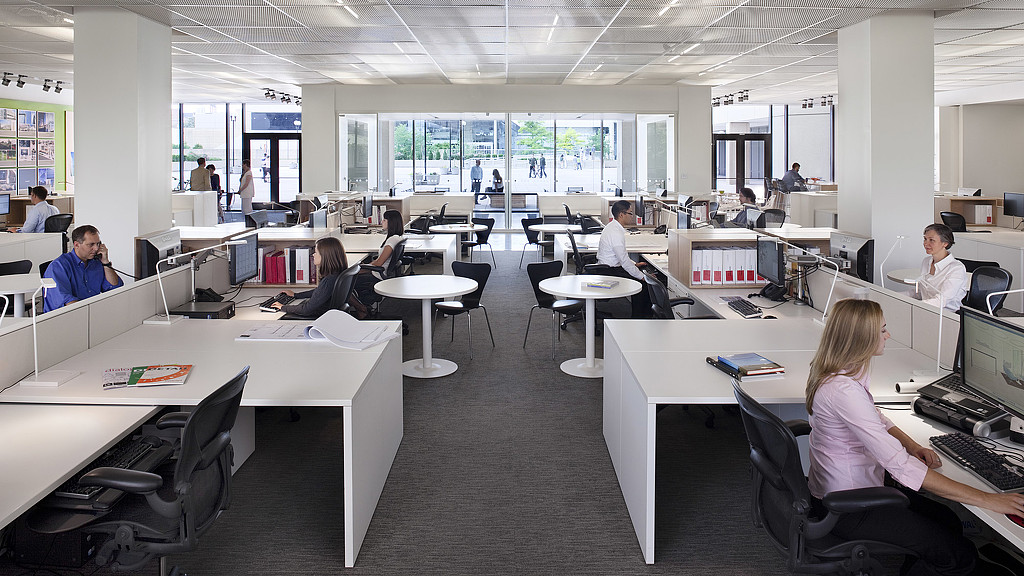The Benefits of Inadvertent Knowledge Transfer
By Cheryl Duvall
Architects and interior designers have always been comfortable with an open workspace. Beginning in college, we reveled in the open environment into which we were thrown, with classmates close by and professors peering over our shoulders offering support and critique. We learned by hearing them make suggestions to our classmates. We grew comfortable with public conversations and learned how to focus on the individual task at hand when necessary.
Then we got our first jobs in the real world. For many professionals in other industries, this was a time to adjust to cubical farms and private offices. But the majority of architects and designers I know continued to enjoy that open collaborative environment of our university life, filled with multiple and diverse spaces in which to connect, socialize, learn, and grow. We made leaps and bounds in our learning when we sat side by side with experienced coworkers and, yes, our bosses. Without a fuss, without scheduling a meeting, without hassles, we learned through osmosis because of the open nature of almost every architecture and design firm.
My own first job in an architecture firm was delightfully open. Only the two principals had offices, but they frankly never sat in them. Instead, they would grab a chair, pull up to our desks and work alongside us. In my first month, my boss sat side by side with me, designing and brainstorming, as well as making phone calls with the client and speaking so I could hear. I learned so much in that informal onboarding process and I am convinced my professional growth would have been stunted or painfully slowed had my boss kept to himself in that private office.

I like to call this practice “inadvertent knowledge transfer.” What usually comes to mind when we think of how we learn is a formal knowledge-delivery process — like a teacher lecturing a student. But real learning is far more organic. From a young age, we learn through immersion in our environments. The prescribed education we receive from teachers and textbooks at school is only a small part of how our brains make sense of the world and form a concept of self. We learn by overhearing what our peers have to say and experiencing the consequences of their behavior — positive, negative, and everything in between — in real time, in person. This is just as true for the workplace as it is for childhood education, and it is just as relevant for factual information as it is for life lessons.
This point was driven home for me recently during the renovation of Gensler’s Washington, D.C. office. During construction, we moved a few of our leaders out of private offices into open plan. One of our managing directors, Francisco, became a nomad, with no assigned desk or the office to which he was accustomed. Each day, he would choose an empty desk or hoteling station from which to work. He was already excited for the opportunity to move about the office and intermingle with our 11 studios and over 400 individuals — then he shared a story with me about an impact he never expected.
Francisco told me he was working at an open workstation in the middle of one of our studios, and he needed to have a phone conversation about some legal matters. All the conference rooms were overbooked due to our phased construction, and all of the on-demand private spaces were occupied too. After thinking it through, he decided to make the call at a workstation in the open since nothing on the agenda was actually confidential. It was just habit to conduct that kind of call behind a closed door.

After he ended the call, a young 20-something designer sitting next to him thanked him, and said she had learned more in that 30 minutes than she had in the previous 30 days. She went on to say that she couldn’t even imagine when she would have ever received that informal education had he been in a private office. She was mentored without having to schedule a meeting, or initiate topics for review.
Make no mistake: There are some conversations we need to hold behind closed doors. Privacy is a key ingredient in the recipe for an emotionally fulfilling workplace, and we must make it available on-demand for confidential and sensitive subjects, and for days when we need time to ourselves. But privacy, like any ingredient, can be a detriment if overused. When information is exchanged between two parties behind closed doors, it tends to stay there, contributing to the information asymmetry which is so chronic in many workplaces.
When information diffuses more readily, organizations grow healthier. People should be able to learn from one another in a natural and spontaneous way. The architecture and design industry has enjoyed this sort of openness for decades, before realizing we were experiencing a “new way of working,” because frankly it has been the only way we have ever known. When we work with clients on making their workplaces more open, flexible, and social, we should lead with this wealth of personal experience.
